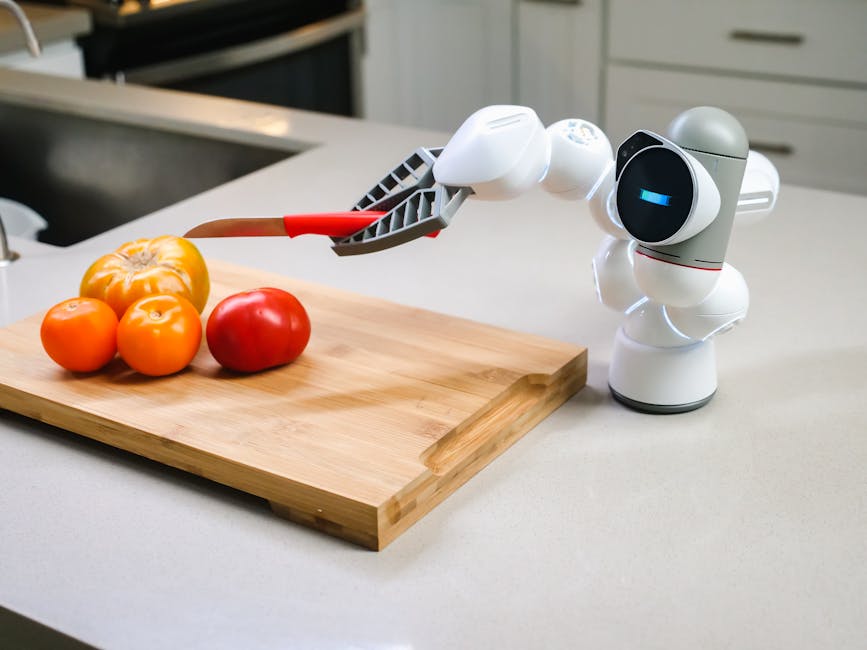Open-Source AI Automation Gains Traction in 2025: Decentralized Solutions Challenge Cloud Dependence
The burgeoning field of artificial intelligence (AI) automation is witnessing a significant shift in 2025, with open-source, locally-deployed solutions gaining considerable traction. This trend, driven by increasing concerns over data privacy, vendor lock-in, and escalating cloud computing costs, presents a compelling alternative to traditional cloud-based AI platforms. The rise of tools like n8n, Docker, and machine learning (ML) models deployed on personal computers signifies a democratization of AI capabilities, empowering users with greater control and flexibility.
The Appeal of Decentralized AI: Privacy and Cost Concerns Fuel Growth
One of the primary drivers behind the adoption of local AI automation solutions in 2025 is the growing emphasis on data privacy and security. Users are increasingly wary of entrusting sensitive data to cloud-based services, particularly in regulated industries like healthcare and finance. The ability to process and analyze data locally, without the need for external servers, mitigates these risks significantly. This is particularly relevant given the increasing regulatory scrutiny around data handling and transfer in 2025.
Cost-Effectiveness and Accessibility
Beyond privacy concerns, the economic advantages of local AI automation are also significant. Cloud computing costs can be substantial, especially for businesses with high data volumes or complex AI workflows. Open-source platforms like n8n, combined with containerization technologies such as Docker, provide a cost-effective alternative, lowering the barrier to entry for individuals and small businesses seeking to leverage AI capabilities. This has led to a proliferation of open-source AI projects throughout 2025.
n8n: A Central Player in the Decentralized AI Ecosystem
n8n, a free and open-source workflow automation tool, has emerged as a key enabler of this decentralized AI movement in 2025. Its modular design allows users to integrate various AI models and services, creating customized workflows for diverse applications. This flexibility allows for the seamless incorporation of both commercially available and open-source AI models, fostering innovation and competition within the ecosystem.
Docker’s Role in Streamlining Deployment
The integration of Docker, a containerization platform, further enhances the practicality and scalability of local AI automation. Docker simplifies the deployment and management of AI models and their dependencies, ensuring consistent performance across different environments. This feature is particularly crucial for businesses aiming for efficient deployment and management of multiple AI models and workflows. This has significantly reduced deployment complexity for many projects in 2025.
Challenges and Limitations of Local AI Solutions
Despite the significant advantages, local AI automation faces certain challenges. The computational resources required to run sophisticated AI models can be demanding, potentially limiting the applicability of this approach for computationally intensive tasks. Moreover, the need for technical expertise to set up and manage local deployments can pose a barrier to entry for some users.
Maintaining Model Updates and Security
Furthermore, ensuring the ongoing security and up-to-date nature of locally deployed AI models presents ongoing challenges. Regular security patches and model updates are essential to maintain optimal performance and prevent vulnerabilities. This requires ongoing maintenance and monitoring, impacting overall cost-effectiveness and ease of use.
The Future of Decentralized AI: A Growing Trend in 2025
The trend towards decentralized AI automation in 2025 is projected to continue gaining momentum. Several factors contribute to this expectation:
- Increased awareness of data privacy concerns: Growing public awareness and stricter regulations are pushing users to seek more control over their data.
- Cost optimization strategies: Businesses are increasingly seeking cost-effective solutions to integrate AI into their operations.
- Technological advancements: Improvements in hardware and software are making local AI automation more accessible and efficient.
- Community support for open-source projects: The vibrant community surrounding projects like n8n fosters innovation and problem-solving.
Key Predictions for the Remainder of 2025
- Expansion of open-source AI model repositories tailored for local deployment.
- Development of user-friendly interfaces to simplify the setup and management of local AI solutions.
- Increased integration of local AI automation tools with existing business software.
- Wider adoption of decentralized AI across various industries.
Conclusion: A Paradigm Shift in AI Accessibility
The rise of open-source, locally deployed AI automation tools like n8n, powered by containerization technologies such as Docker, marks a significant paradigm shift in the accessibility and democratization of artificial intelligence in 2025. This trend is likely to reshape the AI landscape, empowering individuals and organizations with greater control over their data, reducing reliance on centralized cloud services, and facilitating innovation through cost-effective solutions. While challenges remain, the future appears bright for this increasingly important approach to AI integration and development.

